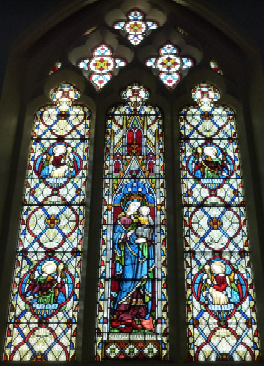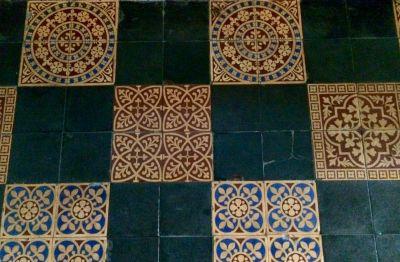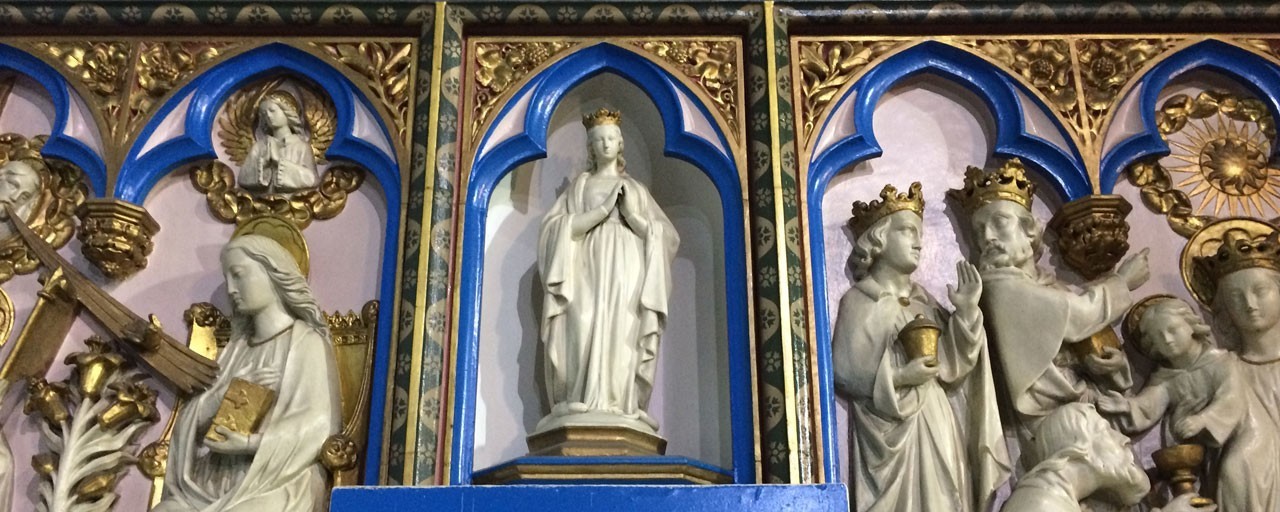Lady Chapel
Pugin designed this addition to the church in 1850, although the chapel is shorter than he envisaged in his 1842 plans, because of the limited funding available from the Fogarty bequest. The Fogarty family were Woolwich publicans whose burial vault is under the central aisle.
George Myers, responsible for the 1842/43 church construction, was again employed for this extension.
As shown in the 1930s photograph in the nearby information panel, the chapel was originally separated from the rest of the church by a carved wooden screen.

Window
The stained glass is by Hardman & Co. of Birmingham. Because of its Pugin connection, the company supplied most of the glass for the Houses of Parliament, and many other churches.

Tiles
The tiles on the footpace are the work of Minton & Co., inspired by Pugin to reinvent the medieval technique for making inlaid patterns that could not be worn off. Minton tiles were used in the Houses of Parliament, the United States Capitol, and countless other buildings.
The chequered red and black tiles on the chapel floor are the last visible example of the original flooring of the church nave, now hidden under the 1980s parquet.
St Anthony statue
On the left, the statue of St Anthony was acquired by Fr Joseph Reeks in 1898. The 1990s painting on the wall behind the statue shows the basilica of St Anthony in Padua.
